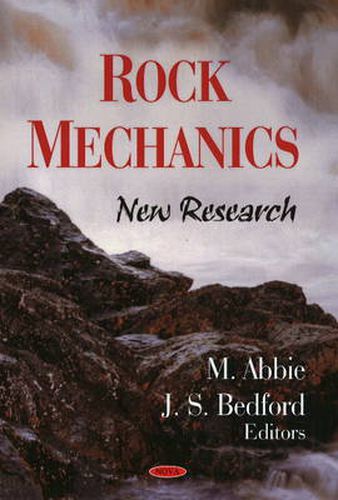Readings Newsletter
Become a Readings Member to make your shopping experience even easier.
Sign in or sign up for free!
You’re not far away from qualifying for FREE standard shipping within Australia
You’ve qualified for FREE standard shipping within Australia
The cart is loading…






Rock mechanics is the theoretical and applied science of the mechanical behaviour of rock and rock masses. Rock mechanics, as applied in mining, petroleum, and civil engineering practice, is concerned with the application of the principles of engineering mechanics to the design of the rock structures. This book examines the hydraulic characterisation of fractured rocks, with specific reference to the fluid flow in single fractures, the interpretation of hydraulic tests, the geometrical characterisation and modelling of fracture networks. An appropriate model for the fluid flow and transport in fractured formations is based on these items. Indications are also given about the best strategy to undertake in order to set up this model. This book develops the conditions, criteria, basic approaches and test case results for establishing the elastic compliance tensor, hydraulic permeability tensor, and numerical techniques for investigating stress effect on hydraulic behaviour of fractured rocks. The correlation between the fracture aperture and size (represented by trace length) is also examined. In addition, the role of CO2 saturated water on the fracturing behaviour of rock samples and the geomaterials geotechnical parameter changes after subjection to environmental solutions are examined.
$9.00 standard shipping within Australia
FREE standard shipping within Australia for orders over $100.00
Express & International shipping calculated at checkout
Rock mechanics is the theoretical and applied science of the mechanical behaviour of rock and rock masses. Rock mechanics, as applied in mining, petroleum, and civil engineering practice, is concerned with the application of the principles of engineering mechanics to the design of the rock structures. This book examines the hydraulic characterisation of fractured rocks, with specific reference to the fluid flow in single fractures, the interpretation of hydraulic tests, the geometrical characterisation and modelling of fracture networks. An appropriate model for the fluid flow and transport in fractured formations is based on these items. Indications are also given about the best strategy to undertake in order to set up this model. This book develops the conditions, criteria, basic approaches and test case results for establishing the elastic compliance tensor, hydraulic permeability tensor, and numerical techniques for investigating stress effect on hydraulic behaviour of fractured rocks. The correlation between the fracture aperture and size (represented by trace length) is also examined. In addition, the role of CO2 saturated water on the fracturing behaviour of rock samples and the geomaterials geotechnical parameter changes after subjection to environmental solutions are examined.